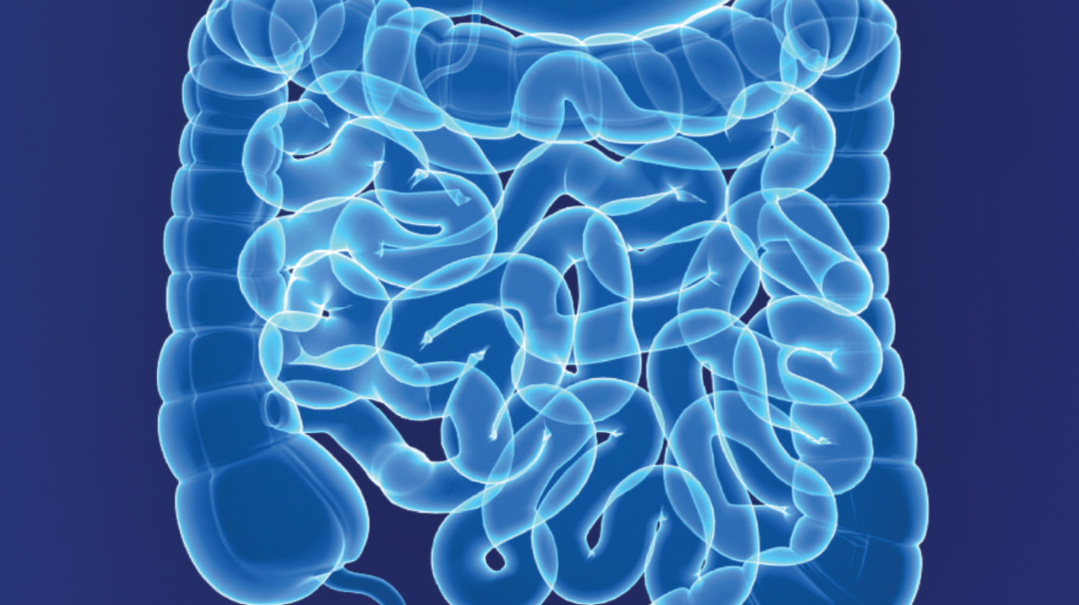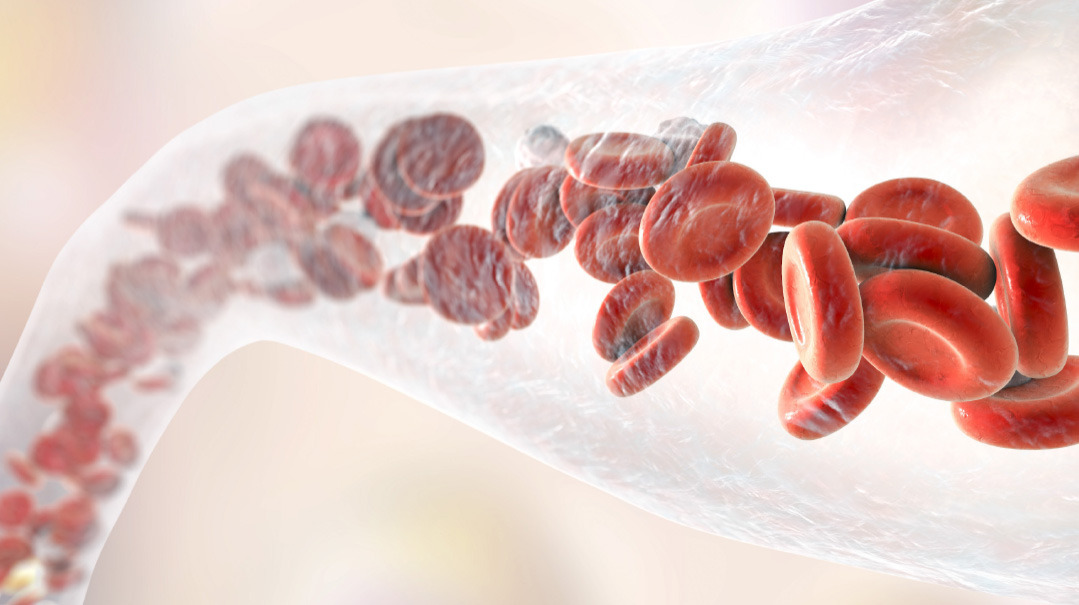Forbidden Foods

My daughter's life was in danger — and the doctors couldn't figure out why

Shiri, my youngest, is an adorable four-year-old girl with Down syndrome. The first year and a half of her life was a roller coaster ride. She couldn’t nurse, but she reacted badly to almost every formula we tried. Her digestive system was terribly sensitive; she’d suffer from bouts of terrible diarrhea and then painful constipation. She also had reflux.
She was around four months old when Covid hit, which obviously complicated matters. By the time she was eight months old, she weighed only eight pounds. Things were getting desperate.
We saw a GI who put her on stronger reflux medication and suggested I start thickening her formula with oatmeal to help with the reflux and promote weight gain.
But when I tried this, the formula entered Shiri’s lungs and she aspirated, which was terrifying. As per instructions, we weren’t feeding her with a bottle, but spoon-feeding instead. Still, Shiri would start coughing and choking with each swallow of this thickened formula. Obviously, this wasn’t the answer.
By the time Shiri was 18 months old, she was severely limited in her feeding choices. She was very picky, perhaps sensory, and was basically receiving all her sustenance from formula. I tried pureeing veggies and cooked chicken from the soup, but she wouldn’t touch it.
The doctor suggested another formula switch, this time from EleCare, which had been her primary formula, to Kate Farms Pediatric Peptide Formula. (The peptide part was important, as it meant the formula was partially pre-digested, something that we found out later was essential for her.) This new formula had 30 calories per ounce as opposed to 20, which was also good, as each calorie was essential for Shiri. Yet because of her past history, we decided to introduce the Kate Farms very slowly, as slow as half an ounce per day in the beginning.
This arduous process of trying to get her sufficient nutrients to sustain her left us all very tense.
But despite all these efforts, it didn’t seem like the Kate Farms was agreeing with her. She still had constant, foul-smelling diarrhea that wouldn’t relent.
At this point, Shiri underwent triple scope surgery. The procedure went smoothly, but right afterward, she contracted an MRSA infection that didn’t respond well to antibiotics. Her digestive system got much worse from the antibiotic treatment, and now her doctor suspected a C. diff infection of the colon.
The doctor wanted to do a stool pathology, but her stools were so liquidy, it took weeks until we were able to actually collect a sample to send for labwork.
Once we finally did get the sample, the results showed that Shiri did test positive for C. diff. Ironically enough, even though the infection often comes as a result of antibiotic treatment for other infections, it’s treated with… antibiotics.
This new type of antibiotics had a really bad taste, though, and Shiri refused to take it. It got to the point that she was so distraught about anything going into her mouth, she started pushing away her formula and refusing simple foods she’d been eating previously, like baby-food jars. After eight days of this, she was barely ingesting any nutrients and was very lethargic.
We went to the ER and found, not surprisingly, she was both dehydrated and malnourished. Still, she refused to take anything by mouth, so they inserted an NG tube through her nose, and for 24 hours they fed her only Pedialyte (a clear liquid containing the basic minerals and electrolytes a body needs to stay hydrated). Thankfully, this 24-hour stretch allowed her system to calm down, and they decided to restart the Kate Farms formula through the NG tube.
It was six o’clock Friday morning, and I was sleeping next to Shiri when the nurse came with the Kate Farms and started pouring the formula into the feeding bag. Still groggy, I nonetheless noticed that the kind of formula they were giving her was not the peptide formula that she usually received. I sleepily pointed this out to the nurse, but she assured me that this was what the doctor ordered, and the two types were really pretty much the same. She reassured me that as soon as this bag would finish going through the tube, they’d give her the other type afterward.
Two hours later, Shiri started vomiting violently. They stopped the feed, but the vomiting didn’t stop. Then her diarrhea got much worse, presenting with blood and mucus. As the day progressed, her heart was racing and her blood pressure was going down. Then her oxygen levels dropped.
It was horrifying to stand there watching, without knowing what was going on and why. Even the hospital staff was at a loss. They asked me if I thought they should start rapid response intervention and move her to the PICU. I had no idea, but it was even more petrifying to know that neither did the medical staff!
Meanwhile, they ran X-rays to test for pneumonia, sent a stool sample to pathology, and did a nose swab for an RVP panel to test for viruses.
Her blood work picked up very low levels of albumin, so they gave her an albumin infusion just before candle lighting. B’chasdei Hashem, a few hours later Shiri perked up. I breathed a slow breath of relief; the worst seemed to be behind us. But we still didn’t know what caused it.
They put her back on Pedialyte for 24 hours, and then started the Kate Farms again — this time the right type of composition. Still, the diarrhea was out of control. We started a cycle where they’d stop the formula, switch back to Pedialyte for 24 hours, she’d get a little better, they’d start the formula again, and she’d regress. We were in the hospital for two weeks just doing constant testing to see what was wrong.
Her GI felt that all this was caused because Shiri was already malnourished and the C. diff infection must have put her over the edge. But they did decide to switch her from Kate Farms back to EleCare again, and finally, she stabilized enough to be discharged.
She still had the NG tube, because there was no way she could ingest enough nutrients by mouth. A few weeks later there were complications from the NG tube, so we went back to the hospital for surgery to implant a proper G tube to feed her directly through her stomach. It seemed there was no turning back, but hopefully, now the G tube would enable us to give her enough EleCare formula to allow her to gain some weight and thrive.
Then came the EleCare formula recall of 2022. Any parent who had a child who needed these recalled formulas can relate to the fear and panic of the time. This wasn’t simply a baby who was fussy and liked a certain formula. Shiri had been through such a harrowing several months and was still very malnourished and not thriving. If she didn’t receive enough formula, her very life was in danger.
This happened on Friday (of course). All the cans of formula I had in the house belonged to the batch that was recalled, and I was stuck without any food for Shiri. I manned the phone, contacting doctors, pharmacists, and parents in the community, trying desperately to track down a few cans of non-recalled formula.
When speaking with my pharmacist, he asked me if I had any formula at all, and I told him that after many phone calls I’d manage to get my hands on a few cans. Interestingly, he told me that he’d spoken to a number of parents who were stuck without essential formula, and only those who belonged to the frum community had managed to procure it. Mi k’amcha Yisrael!
After Shabbos, we decided to switch Shiri to Neocate, another formula similar to EleCare.
Shiri was holding her own with the Neocate for several months, so her nutritionist decided to add a real-food-based formula to her diet, consisting mostly of pea and broccoli proteins. We planned to transition to the new formula very slowly, with one ounce of this new formula for the first feed.
The morning I planned to start the new formula, we had an eye doctor appointment. I put Shiri’s regular formula into the feeding bag, plus this one ounce of pea-based formula. We went to the eye doctor, where she got drops and did an eye exam — all was fine. Then I dropped her off at school and walked to work.
I had just sat down in my office when I got a call from Shiri’s school that she’d started vomiting. I quickly grabbed a cab and rushed back to the school. By the time I got there 15 minutes later, Shiri was lying in her carriage unresponsive and zombie-like, looking half-dead. She was throwing up violently, her eyelids half-closed and her skin a greenish tinge.
When we got home, I called the eye doctor, thinking maybe this was some weird reaction to the eye drops, but he didn’t think so. I also got hold of our GI and asked if the one ounce of new formula could have caused this, but she also didn’t think so.
Shiri kept vomiting for another hour or two, and then had terrible diarrhea filled with pus and blood. I gave her Pedialyte through the feeding tube so I could reassure myself she wasn’t dehydrated. Finally, she fell asleep on the dining room floor and slept straight through the afternoon and night until the next morning, when she woke up bright and cheerful. I was still traumatized by the previous day’s violent reaction, so I gave the next two feedings half Neocate and half Pedialyte. Despite the fact that it really didn’t make sense that one ounce of the formula could have caused this terrible reaction, I refused to try it again.
By the time Shiri turned three, she was doing much better. She was showing interest in different foods with smooth consistencies like applesauce and smoothies. She also loved potato kugel, which I started making every day. But still, she ate maybe a half a slice per day. The bulk of her nutrition was still coming from her formula, via feeding tube. Still, we encouraged her to eat whatever she could by mouth. Her school was also on board, trying to get her to take pureed foods orally, and working on expanding her repertoire.
One day, they called to ask me if they could give her vegetable soup. They’d thickened the soup with bread crumbs so she shouldn’t aspirate, and I gave them permission.
Two hours later they called saying that Shiri had started throwing up. I knew it had to be the soup. I ran to the school, and again she looked horrible, with terrible pallor and constant vomiting. A few hours after she got home, she conked out in a deep sleep, just like the last time this had happened.
I opened her G tube and vented out any leftover soup that might have still been inside, then I reached the school’s cook and asked him to tell me each and every ingredient in the soup. Mostly it was a split-pea soup with veggies. And then it hit me: The last time this had happened was when we tried the real-foods-based formula — and that was made from peas! So there was some pattern in the madness of Shiri’s digestive woes! Maybe she had an allergy to peas?
I called her GI right away, and she listened carefully.
“It may not be just peas,” she answered. “This sounds more like FPIES (food protein induced enterocolitis) but FPIES is usually outgrown by about three years old, so I don’t think it could be that.”
Shiri did have an allergist on her team, so I called him right away, too, and told him the whole story.
“FPIES,” he said immediately.
“But isn’t Shiri too old for FPIES?”
Despite her age, the allergist was convinced it was FPIES. Since Shiri had Down syndrome, her general development was behind schedule, and he reasoned that her FPIES allergies were probably also behind schedule.
We decided to do a full allergy panel, but we needed to wait until six weeks after the allergic reaction. In the meantime, the allergist urged me to keep her away from peas. That was fine. I wasn’t going anywhere near peas after seeing this terrifying reaction twice.
In the meantime, I started doing research on FPIES and discovered that one of the comorbidities of FPIES is that the body loses albumin. Bingo! I started connecting the dots. The first time this had happened, the hospital had given Shiri an albumin infusion. At that time, they’d suspected a C. diff infection, but it probably had been FPIES all along. Kate Farms formula also contains peas (albeit predigested, so her reactions were less intense).
We were able to get into a top FPIES specialist, Dr. Anna Nowak-Wegrzyn in NYU. She established a firm diagnosis of FPIES and felt that all Shiri’s past digestive illnesses stemmed from her many allergies to so many foods.
It was a relief to get such a definitive diagnosis. But there really wasn’t a clear resolution despite the clear diagnosis, since the protocol for FPIES is simply to stay away from all the foods that may cause reactions. FPIES is different from regular allergic reactions because there is always at least a two-hour gap between ingesting the food and the reaction, so the connection isn’t always apparent. Plus, each body reacts differently to the foods it can’t tolerate. In Shiri’s case the reactions presented as gastro issues, but I’ve since met other mothers of kids with FPIES, and some of them have had reactions as innocuous as headaches or flu symptoms.
However, like any allergy, a slight reaction may be tolerated by the body, but a full-blown reaction like Shiri’s can cause damage in the long-term, even causing chronic conditions like colitis.
Today, Shiri is four, and we’re not trying any new foods at all. We’re just grateful to have finally found the reason for all these ups and downs, and we are working to keep her stable while getting as many nutrients as possible. Perhaps when she’s older, we may attempt again to introduce tiny amounts of safer food, though peas and other common FPIES triggers, like milk and fish, will probably always be off limits to her. But for right now, we’re just grateful to have our adorable Shiri feeling well. She’s delicious enough for us!
Sharing our journeys can bring awareness, empathy, and a sense of connection to those who’ve gone through a medical crisis. If you had a medical mystery and would like to be part of this column, please send a brief description of your story to familyfirst@mishpacha.com
WhatÕs FPIES?
FPIES — food protein-induced enterocolitis syndrome — is a food allergy that primarily affects the gastrointestinal (GI) tract. The most common FPIES food triggers are cow’s milk, soy, rice, and oats, but any food can cause FPIES symptoms. What characterizes FPIES as opposed to other food allergies is the gap of time between ingestion and then the reaction. Furthermore, often the trigger food does not show up in standard allergy tests.
Typical symptoms of FPIES include severe vomiting, diarrhea, and dehydration two hours after eating. These symptoms can lead to other complications, including changes in blood pressure and body temperature, lethargy, and overall failure to thrive. Generally, infants who are bottle-fed show symptoms earlier than infants who are exclusively nursed. For nursing babies, reactions generally only begin when other foods are added to their diet. However, there are babies who are so sensitive that they even have reactions based on the nursing mother’s diet.
Signs and Symptoms:
Symptoms of FPIES may include:
Vomiting, typically occurring two hours after ingestion
Diarrhea that begins after vomiting
Dehydration
Severe lethargy
Changes in blood pressure and body temperature
Body shock
Testing and Diagnosis
Diagnosing FPIES can be challenging, as is finding the specific trigger food or foods, as symptoms don’t develop immediately after ingestion. Additionally, sometimes FPIES triggers don’t show up on standard allergy tests such as a skin prick test (SPT) or a blood test that measures food IgE antibodies (RAST). A negative allergy evaluation may actually delay the FPIES diagnosis, since it’s assumed that food is not causing the reaction. Therefore, supervised trial tasting tests are generally done to figure out food triggers.
For most people, FPIES is not a lifelong condition. As the child grows older, doctors generally recommend trialing one food at a time, slowly introducing each new food.
Information from The Children’s Hospital of Philadelphia
(Originally featured in Family First, Issue 881)
Oops! We could not locate your form.







